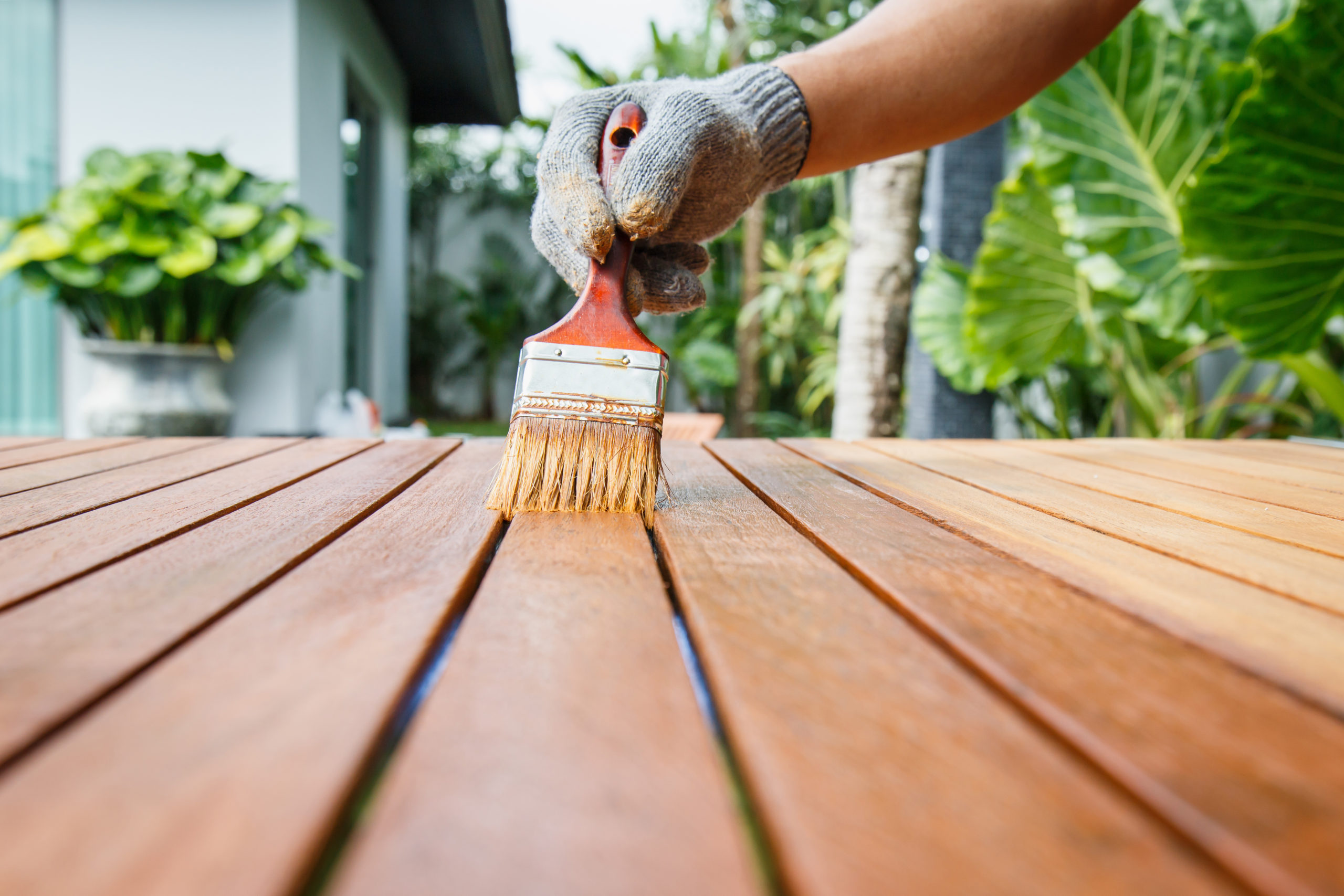When it comes to transforming wood in any form, whether it be on furniture, flooring, or exterior siding, paint and stain are the most popular choices. While both of these products do similar things – namely change the color and look of the wood, they are truly very different. Both options have their own sets of pros and cons, which are important to know when choosing between the two.
First, let’s talk about stain. When it comes to wood, some may argue that stain is the more popular choice. Available in a huge variety of colors, stains typically require only one coat to achieve the desired look. And unlike paint which will completely cover the wood pattern underneath, stain is a thinner substance that simply changes the finish, or “tint” of the wood. With semi-transparent stains, the pigment is thinner, allowing you to see the wood grain underneath the stain. This gives it a more natural finish. On the other hand, solid color stains will cover grain, but allow you to see the profile of the wood.
Stains are most commonly used for surfaces such as siding, fences, decking, furniture or molding. Besides appearance, the main function of the stain is to “seal” the wood without the use of a primer. However, stain does have it’s disadvantages. For one, you don’t have any options when it comes to sheen, as stains only come in one finish. Additionally, wood easily absorbs this material, which means certain projects may require more stain than it would paint.
Now, let’s talk about paint. When painting a non-porous material, paint is almost always the better choice. When it comes to wood specifically, paint works great on drywall, trim or siding (except for cedar siding). Unlike stain, when using paint you’ll also have to account for the price of surface preservatives and primer. Because of this, paint tends to be the pricier option. For a lot of people, the sheer amount of choices in terms of type, color and sheen outweigh this downside.
Keep in mind that anything you paint will come out opaque, meaning the natural looking of the material beneath will be hidden. Paint is much thicker, and it will be immediately clear that a project has been painted, rather than looking like a natural wood color. However, with paint you’ll get a more uniform finish. It is also the more durable choice, lasting on average 10 years longer than stain, bearing high quality paint was used.
We sincerely hope this helps you choose which material is best for your project! Still unsure? That’s what the experts are here for. Give us a call today!

